What Color Do You Want Your Ketone Strips to Be
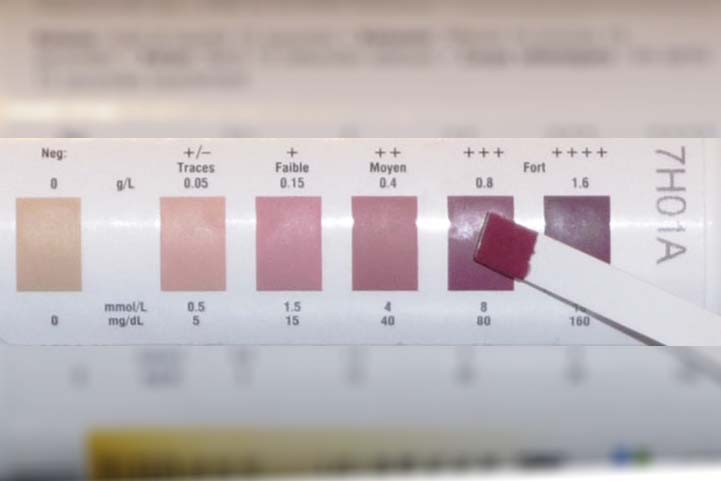
Last Updated on October 3, 2018 by
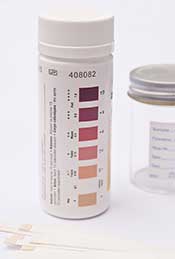 Many people following keto diets want to be in ketosis, a natural state in which the body burns fat for fuel.
Many people following keto diets want to be in ketosis, a natural state in which the body burns fat for fuel.
For this reason, people are curious about whether they are doing enough (via carb restriction) to achieve this state.
As a result, ketone strips are a popular tool that numerous people use as a way of measuring ketosis.
However, just how accurate are they?
And how do they compare to alternate methods of measuring ketones?
What is Ketosis?
Anyone following a standard high-carbohydrate diet will be burning glucose for energy.
However, the body can use both carbohydrate and fat for fuel (1).
When carbohydrate intake is very low, the body switches to burning fat for energy. As this happens, our body enters a state of ketosis.
Ketosis is a natural biological state during which our body burns fat for fuel. While we are "in ketosis," our blood levels of ketones—a by-product from the breakdown of fats—rise.
Measuring these ketones (also known as 'ketone bodies') can, therefore, provide a hint as to how deeply our body is (or isn't) in ketosis.
For this reason, ketone strips—which measure the level of ketones—have become increasingly popular in recent times.
Key Point: Ketosis is a biological state where the human body burns fat rather than carbs.
What are Ketone Test Strips?
For people who want to know if they're in ketosis, ketone test strips are a cheap and simple way of detecting ketone levels.
They are otherwise known as 'ketone sticks' and work by urinalysis to tell us the volume of acetoacetate in our urine.
If you don't know what acetoacetate is, then let's start at the beginning.
First of all, there are three types of ketone body;
- Acetoacetate

Acetoacetate is one of the two main ketone bodies, and it is present in urine.
We can test for it by using ketone strips.
- Beta-hydroxybutyrate

Beta-hydroxybutyrate is created from acetoacetate, and it is the second of the main ketone bodies.
This ketone body shows up in our blood, and blood ketone meters can tell us the volume.
- Acetone

Acetone is also a ketone body, although not as prevalent as acetoacetate and beta-hydroxybutyrate.
The breakdown of acetoacetate produces acetone, and it is present in our breath.
How Do Ketone Strips Work?
You can probably guess the finer details, but if you want to know how to use ketone strips, the process looks like this;
- Take a urine sample in a clean container/jar of some sort
- Hold the end of the strip in the urine for a few seconds
- Shake the strip to remove any excess "liquid" before removing from the container
- Wait 15 seconds until the ketone strip changes color
- Comparing the color of your ketone strip to the color chart will let you know if you're in ketosis (and how deeply).
Here is a video of someone doing it;
Knowing how to read the ketone strip is important too, so here is the color chart;
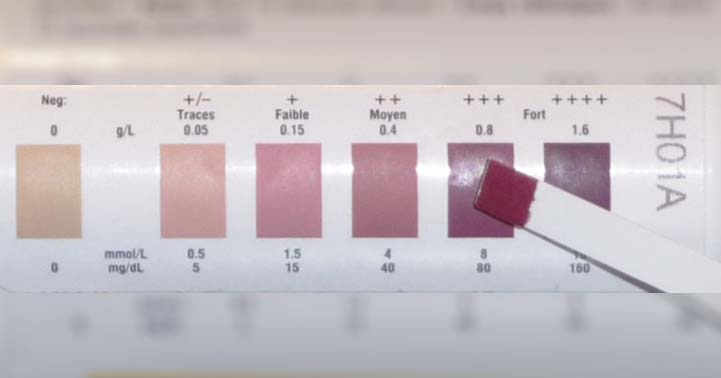
The color on the far left means that no ketones are present, and the pink colors signify a light to medium state of nutritional ketosis.
As we move further to the right, the darker purple shades suggest a very strong level of ketosis.
| State of Ketosis | Ketone Level (mmol/L) | Ketone Level (mg/dL) |
| Very light | 0.1 – 0.5 | 1 – 5 |
| Light | 0.6 – 1.5 | 6 – 15 |
| Medium | 1.6 – 3.0 | 16 – 30 |
| Strong | 3.1 + | 31 + |
Key Point: Ketone test strips are a urinalysis tool. They give people an indication of their state of ketosis by showing the level of ketones in urine.
What Level of Ketone Bodies is Best For Health?
For those aiming to be in ketosis, what kind of reading should we strive for?
I have a feeling that many will look at the table and automatically assume that 'strong' is best.
However, for the average person just looking to take care of their health—or maybe lose some weight—higher levels are not necessary at all.
If you're in the 'light' range, then your body will be burning fat for fuel, and you'll have ketone levels that are many multiples of the average person.
In short, aiming for a random 'optimal' ketone number isn't the right approach.
Listening to your body and seeing how you feel? That's the right way to go about it.
Note:If you are undertaking a ketogenic diet for a medical purpose, speak to your physician about this. Therapeutic ketosis levels may be very different to what the average person needs.
Key Point: Higher ketone levels are not necessarily better. For the average person, light/moderate ketosis is perfectly fine.
How Accurately Do Ketone Strips Measure Ketosis?
On the negative side, ketone strips are not always as accurate as most people believe.
For example, here are a few circumstances in which an inaccurate reading could be possible;
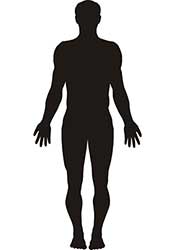 Ketones in Urine Don't Give a True Indication of What's Happening in the Body
Ketones in Urine Don't Give a True Indication of What's Happening in the Body
In the first place, any ketones which go unused by the body are excreted via urine (2).
To put that differently, urine strips only show the number of excessive ketones that our body couldn't use.
Therefore, just because the level of ketones in urine is small doesn't mean that the levels in our blood are also small.
Nor does it mean that we are not in ketosis.
For this reason, blood ketone levels are a more accurate way of measuring ketosis than ketone test strips.
Hydration – Does Over/Under Hydration Affect Ketone Levels?
First of all, this idea relates to how well hydrated (or dehydrated) someone is, and whether this state impacts the ketone strip reading.
For instance, if someone is drinking large amounts of water, then it may dilute urine to the extent that affects the reading.
On the other hand, if someone is dehydrated, then higher concentrations of ketones may be present.
However, I'm not convinced that hydration greatly impacts the reading.
Ketone strips are designed for the average person consuming typical amounts of water. If someone is seriously dehydrated or drinking extreme amounts of water, then yes… this may potentially impact the reading.
But for the average person, I don't think hydration should significantly affect these readings.
 Keto-Adaptation
Keto-Adaptation
It takes time to adapt to burning fat for fuel.
For example, you may have heard about the 'keto flu.'
This particular name refers to the often uncomfortable period during which the body learns to use fat for fuel rather than glucose.
In other words, when someone first starts a ketogenic diet, the body won't be using ketones efficiently (3).
As a result, it's likely there will be a higher concentration of waste ketones in the urine in the initial stages.
Over time and as the body adapts to burning fat for fuel, it should become more adept at burning ketones for energy. As this happens, the volume of ketones we excrete will fall.
Consequently, ketone readings may go down at this time.
This disparity may be confusing since your body will be more in ketosis, yet with a lower level of ketones showing on the ketone strip.
It is a reason why ketone sticks don't tell the full story and why their accuracy isn't always reliable.
Key Point: Ketone strips are not always 100% accurate, and the readings may fluctuate for a number of reasons.
What Are Some Other Ways To Measure Ketones?
There are three main ways of measuring ketones in the body;
- Blood meters (beta-hydroxybutyrate)
- Breath analyzers (acetone)
- Urine strips (acetoacetate)
As we have already gone through the latter, let's look at the other two methods.
Ketone Blood Meter
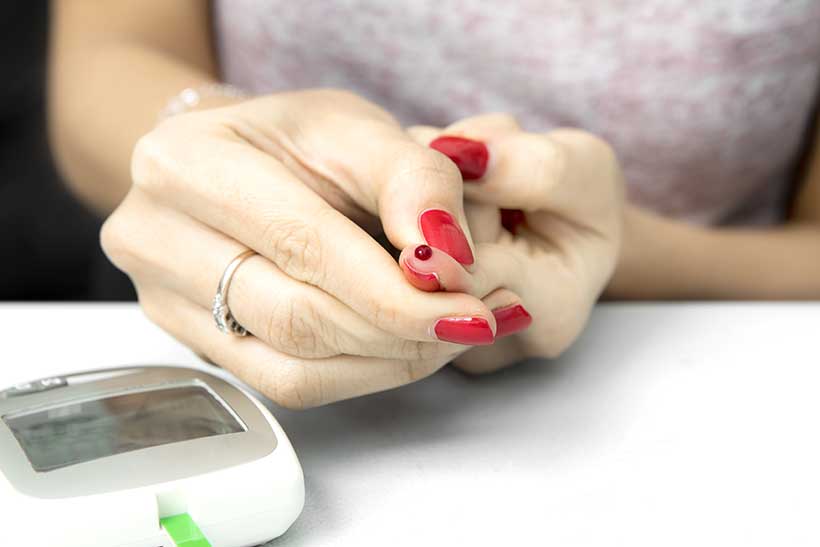
Ketone blood meters are more accurate than testing by urine strips.
However, this extra accuracy comes at a higher price.
How do blood ketone meters work?
- First, you need to insert a blood ketone strip into the ketone meter.
- After this, prick your finger to draw some blood (don't worry, it's just a small drop like a standard blood glucose test).
- Put the blood on the ketone strip and check the results.
This technique is simple, and as previously mentioned, levels of ketones in the blood give a more reliable indicator of ketosis than urine levels.
Breath Ketone Analyzer
While ketone breath analyzers don't offer the same accuracy as blood meters, they have some positive points;
- The initial purchase of the equipment is more expensive than ketone strips, but it's a one-time deal. No more purchases are necessary. Unlike the other two methods, you can re-use the breathalyzer as much as you want. It's by far the most cost-effective way of measuring ketones.
- It's straightforward to use and doesn't require urine or blood.
How do breath ketone analyzers work?
They are very simple.
All you have to do is turn on the breathalyzer and then breathe into it for however long the manufacturer instructs (about 15 seconds).
Wait for a few seconds and then check the results.
Key Point: Blood ketone meters and breath ketone analyzers are more accurate than ketone strips.
What is the Best Way To Measure Ketosis?
This question has no clear answer, and it depends on what you're looking for.
- Ketone Urine Strips: Very cheap but low in accuracy compared to the alternatives
- Blood Meters: Highest degree of accuracy at the highest price
- Breath Ketone Analyzer:Expensive, but you only pay once since it needs no ketone strips. Probably somewhere in the middle when it comes to accuracy.
Final Thoughts
Ketone strips are a reasonably accurate—and cheap—way to detect someone's (approximate) state of ketosis.
For someone attempting to 'enter' therapeutic levels of ketosis, ketone testing is a valuable tool.
However, they are probably not necessary for the average person who just wants to lose a bit of weight or finds a keto diet beneficial.
That said, they can be a useful way to check that those new to ketogenic diets are on the right track.
For information on when excessive ketone levels can be an issue, see this ketoacidosis guide.
Related Articles
The Performance Benefits of Ketosis
What Color Do You Want Your Ketone Strips to Be
Source: https://www.nutritionadvance.com/measuring-ketosis-ketone-test-strips/